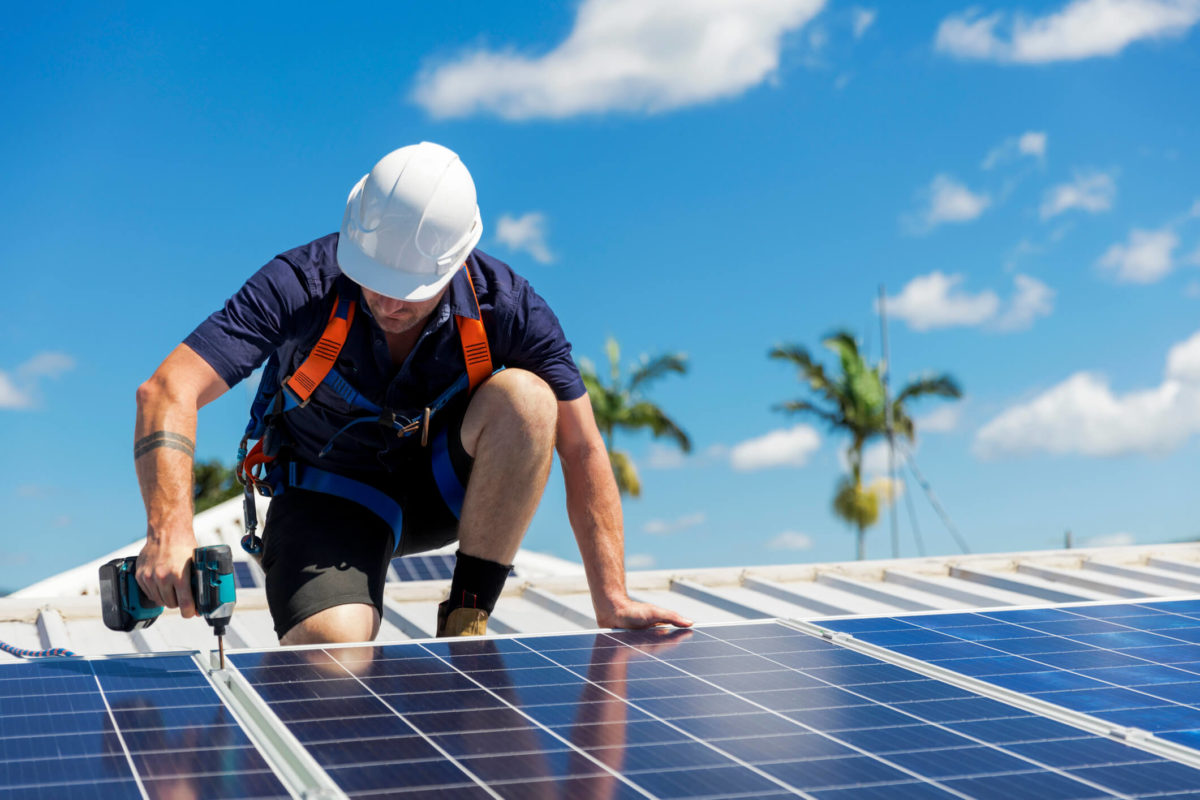What is a Solar power system?
Many people today have an idea of what the answer to the question is due how popular this source of energy has become in the recent years. Simply put, a solar power system is a system that turns light energy from the sun into electricity by using photovoltaic solar cells. (Commonly known as solar panels).
Light from the sun hits the solar panels, that turn the light energy into electric energy (Direct current (DC)) which we then use to power our appliances. The majority of our appliances we have in our homes use Alternating current (AC) to operate. So, to benefit from solar energy, we need to convert that harnessed DC current to AC current. To do this, we pass the DC current into a device called an inverter to convert the current to AC. When the DC current is converted to AC current, we then use it to power all our devices that require alternating current to work.
One might ask at this point, what about the batteries, what do we need them for? The batteries are used to store energy for use when there is little or no sunlight to produce more energy, like on a cloudy day or night time. So, when building a system, the batteries are always positioned before the inverter so as to charge them with DC current before its converted to AC current.
Why is this?
Alternating current (as by its name) is fluctuating current. That means it changes from positive to negative direction at a certain frequency. If we take the average of this fluctuation, we end up with a zero current. That means, simply put, after charging your battery you will end up with a zero-power battery. The only type of current a battery can hold is a DC type of current because it is constant.
Seems complicated? Ask our specialist at www.deltacron.com/contact-us to make it clear for you.
What type of solar systems are there, and which one should I pick for my house or office building?
There are two types of solar energy systems;
- Off-Grid Solar System: – this is the type of system which allows the user to be 100% free from the utility grid. This system allows you to produce all your electric energy on-site and store the extra energy for later use. With an off-grid system, you will need to have a battery storage system (or commonly known as a battery bank) to store your electric energy to be used when there isn’t any sunlight.
- On-grid Solar System: – this type of system is also known as grid-tied system, as it is tied to the local electric grid. With an on-grid system, the user ends up using both electric energy from the grid and the one from their own solar system. This is commonly used in areas that have very stable supply of electricity by the local distribution companies (LDC). The user usually gets a rebate for the extra electricity they produce, because the excess electricity is usually sent back into the electric grid for others to use, hence reversing their utility meter. This type of system does not require one to have a battery bank as their local grid acts as one.
So, when choosing which system is best for you, one has to look at the circumstances their area of residence puts them in. If you are in rural area or an area with unreliable or no electricity supply at all, an off-grid system would be the best choice. If one is in an area with constant but unclean or expensive supply of electricity, then and on-grid system would be good for them.
For more help with choosing the type of system for your needs, our team of experts are available for a free consultation at https://www.deltacron.com/contact-us
What size of a system do I need?
Another big hurdle that people that want to go solar have is deciding the size of system they should install for themselves. Briefly put, when sizing your system, one has to look at what appliances they want to power in their home, their required power to run (Wattage) and for how long, on average, they want to run them. First, the wattage of many appliances is written at their back. Once this is known, it is multiplied by the average time of use per day. This is done for every appliance in the home, and the total added. This is the total required power per day. A simple structure of calculating is given in the table below:
| Appliance Name | Wattage (W) | Time of use per day in hours (T) | Daily Watt hour |
| 1 (E.g. TV) | Can be found at the back | How long is tv watched in the house | T x W |
| 2 (E.g. Computer) | Can be found at the back | How long the computer is used | T x W |
| Total Daily watt hour for all appliances |
The total Daily watt hour for all appliances is the energy your solar system is required to produce per day. With this information your system should be designed to produce this much energy.
For more on the detailed calculations and system design, contact us at https://www.deltacron.com/contact-us
Enquire Now
